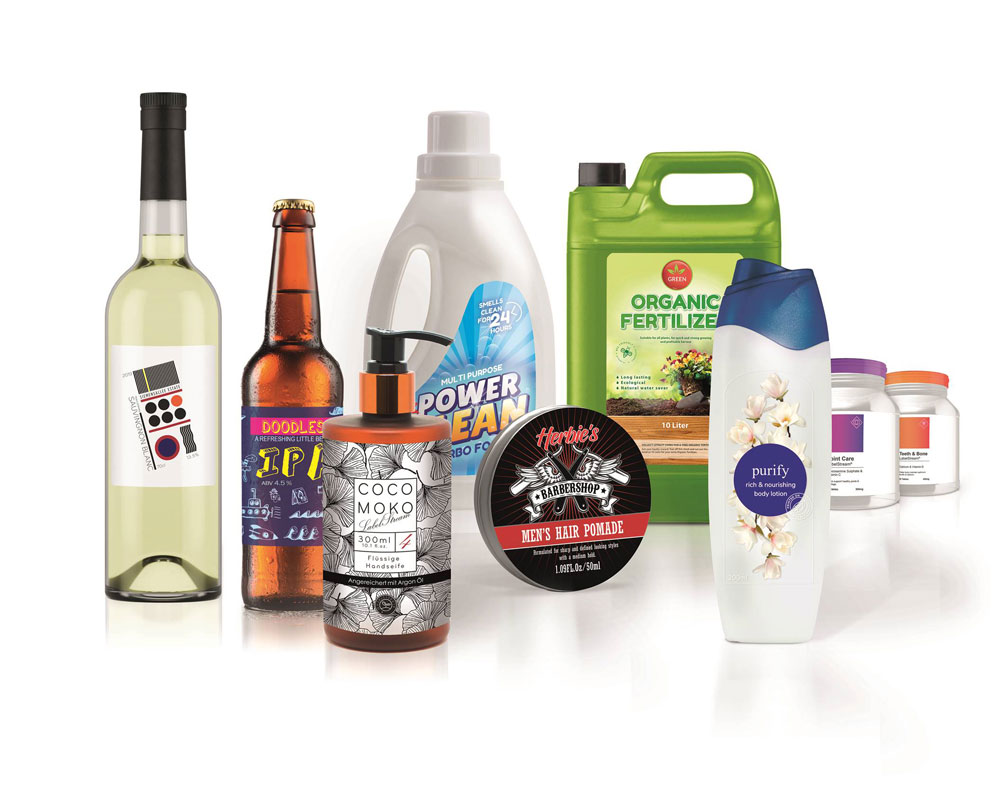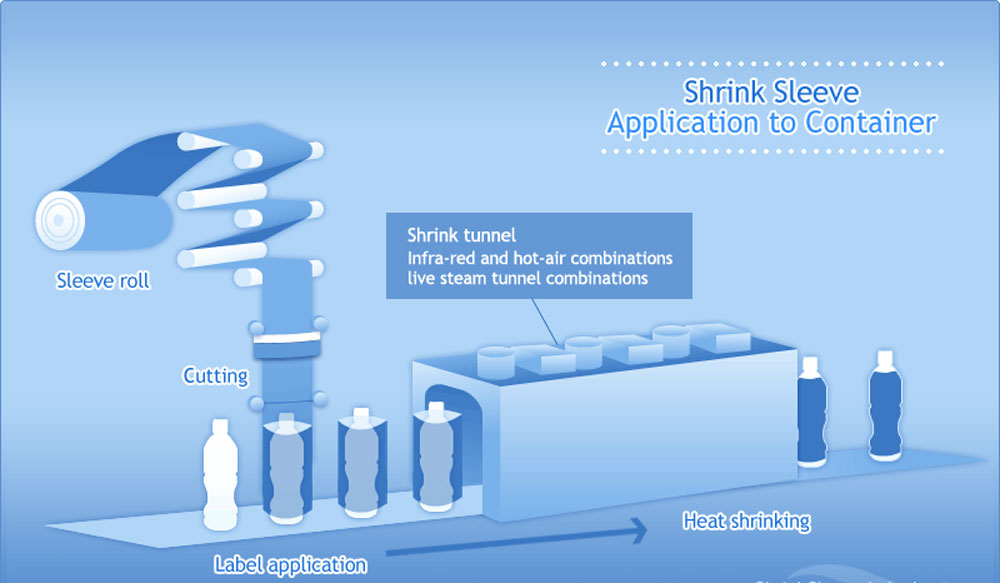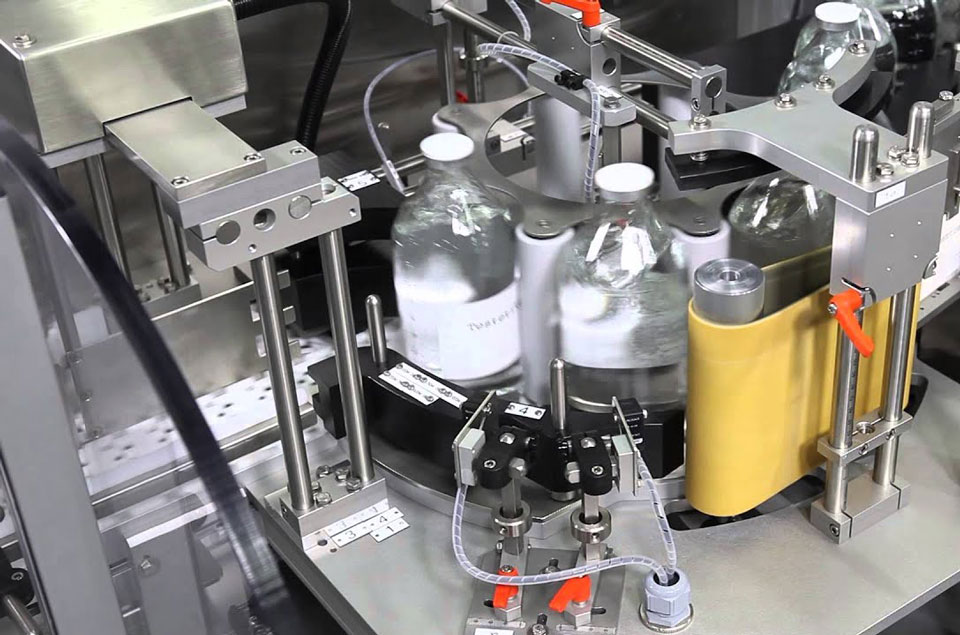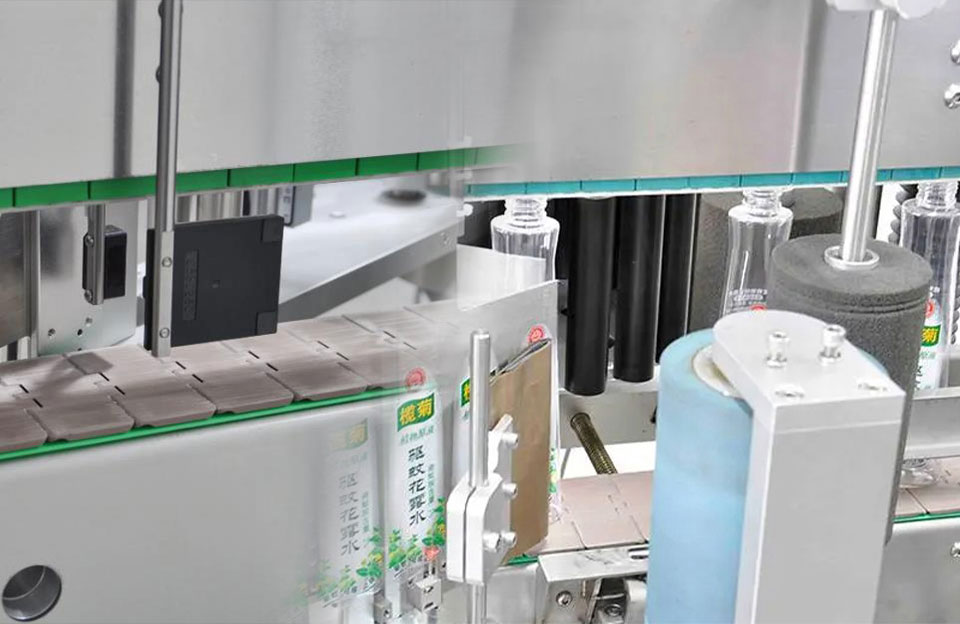A shrink sleeve labeling machine applied to a product by sliding a printed sleeve, usually made of polyethylene terephthalate (PETG) or polyvinyl chloride (PVC), over the container. It is then fed into a heat tunnel specially designed for shrink sleeves, activating the shrink properties of the sleeve so that it conforms perfectly to the shape of the container.
Shrink sleeves can be used on standard bottles, jars, and jars but excel in unique packaging scenarios as they can fit various container types and shapes. They are also compatible with various container materials such as plastic, glass, and metal.
Which Products Are Suitable For the Sleeve Labeling Machine

Sleeve labeling machines are designed to apply shrink or stretch sleeves to various containers or products. They are commonly used in food and beverage, pharmaceutical, cosmetics, and household goods. A product’s suitability for sleeve labels depends on its shape, size, and material. Here are some product types that are typically suitable for sleeves:
- Bottles: Sleeve labeling machines commonly label bottles of various shapes and sizes, including water bottles, soft drink bottles, juice bottles, condiment bottles, etc.
- Cans: Aluminum or steel cans for beverages such as beer, energy drinks, or canned food can be labeled using a sleeve labeling machine.
- Jars: Glass or plastic jars for products such as sauces, jams, pickles, and cosmetics often have sleeve labels.
- Buckets and Cups: Containers made of plastic or cardboard, such as yogurt cups, ice cream tubs, or coffee cups, can be labeled using shrink sleeves.
- Irregularly Shaped Containers: Sleeve labels are especially useful for irregularly shaped products that are difficult to use with traditional labeling methods.
- Cosmetics and Personal Care Products: Various cosmetics such as shampoo bottles, lotion bottles, and cosmetic containers are usually labeled with shrink sleeves.
- Household Cleaners: Sleeve labels for bottles and containers of household cleaning products such as cleaners, disinfectants, and cleaning solutions are acceptable.
- Pharmaceutical Products: Sleeve labels are also used for pharmaceutical products such as medicine bottles and vials.
It must be ensured that the container material is compatible with the type of shrink or stretch sleeve being used. The labeling machine should also be adjustable to accommodate various container sizes and shapes.
Working Principle of Shrink Sleeve Labeling Machine

Shrink sleeve labeling machines apply shrink sleeves to containers such as bottles, cans, jars, or bathtubs. The process involves several steps:
- Sleeve Preparation: The shrink sleeve is printed with the required graphics, product information, and branding elements, and the sleeve is made of heat-shrinkable plastic material such as PVC, PET-G, or OPS.
- Sleeve Feeding: Printed sleeves are placed on reels or stacked in magazines inside the labeling machine. The machine feeds the sleeves into the labeling area as the containers pass the process.
- Container Feeding: The container to be labeled is transported to the labeling machine through the conveying system or continuous conveying mechanism.
- Sleeve Application: As the container moves through the labeling station, the shrink sleeve is cut and formed to the correct size using the cutting mechanism and guide rails.
- The sleeve is then positioned around the container using various methods:
• Mandrels: Some machines use a mandrel system that holds the container in place while the sleeve is applied around the container.
• Vacuum: In vacuum-based systems, the container is held in place by vacuum suction, allowing the cannula to be positioned accurately.
• Pressure Blow: The pressure blow system uses a jet of air to aid in placing the cannula. - Hot Aisle: Once the sleeve is properly positioned on the container, the labeled container goes through the hot aisle. Heat activates the shrinking properties of the plastic material, allowing the sleeve to fit snugly to the shape of the container.
- Cooling and Conveying: After passing through the hot aisle, labeled containers may pass through a cooling section to ensure the sleeves are properly seated. Once cooled, the containers are conveyed out of the labeling machine for further processing or packaging.
- Advantages of Shrink Sleeve Labels:
• 360-Degree Coverage: Heat-shrinkable sleeves provide full body labeling with ample space for graphics and product information.
• Create Unique Shapes: Heat-shrinkable sleeves are suitable for irregularly shaped containers, enhancing the overall appearance.
• Tamper-Evident Seal: Shrink sleeves can be designed to create a tamper-evident seal, ensuring product integrity.
Shrink sleeve labeling machines are a versatile and attractive method that can make products stand out on the shelf and effectively communicate product information to consumers.
Conclusion
A shrink sleeve labeling machine also open up all kinds of creativity as you can design them to fit your product exactly how you want, allowing you to accentuate silhouettes and create some truly unique labels. By meeting consumer demand for unique packaging, you can even boost sales! This unique, eye-catching packaging and the products inside will keep customers coming back time and time again as they connect your brand image with the way your products are presented.


